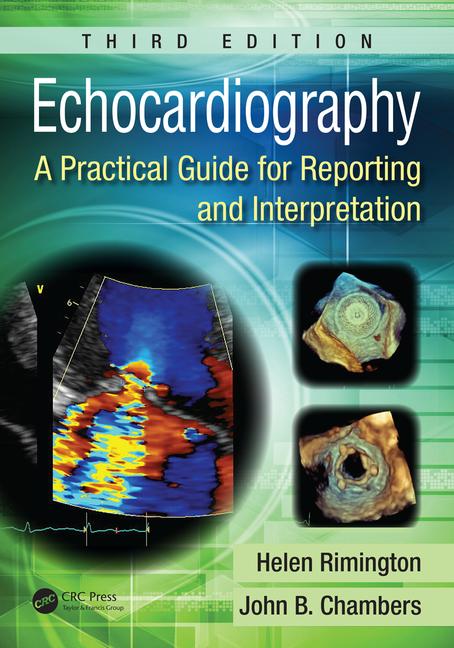Editors: Helen Rimington and John B Chambers
 Publisher: CRC Press, Taylor and Francis Group 2015
Publisher: CRC Press, Taylor and Francis Group 2015
ISBN: 978-1-4822-3192-2
Price: £27.99
Echocardiography is considered to be the only one diagnostic tool that allows live assessment of a beating heart, either cardiac function or valvular function as well as morphologic evaluation. It is therefore one of the most widely used first-line cardiac diagnostic tools for both cardiac and non-cardiac clinicians.
This book, by authors among the most experienced echocardiographers provides an up-to-date and clear overview for how to report and interpret echocardiograms. With the straightforward approach, this book sets out to make an echo report informative and practical. Topics in this book include how to record, interpret and report echocardiograms in almost all cardiac conditions. It describes normal and abnormal findings in a clear narration. The approach to pathologies is concise, simple and systematic. The book also includes a checklist for general medical requests, echocardiography in acute medicine, nomenclature and classification of cardiac pathology, and appropriate indications for advanced echocardiography.
In “Minimum standard echocardiogram,” there are illustrations of how key measurements are taken and interpreted. Cardiac structures are described in corresponding chapters with normal variants and updated measurements published by British Society of Echocardiography. In the same chapters, the pathology is described with clear guidance on how to grade, report and interpret. The chapters on “The aorta and dissection” and “The right ventricle” are my favourites.
This book is the first one I read to narrate how a non-echocardiographer should interpret an echo report and what are the relevant findings and irrelevant findings related to clinical importance. This will help primary clinicians including GPs and specialist nurses to prioritise patients and minimise the need for referral or expert opinion.
As an easily accessible and portable reference book, it does not provide detailed pathophysiology, which may considered an impediment to further learning by those who would like to embrace the whole knowledge from a single book. However, from the practical point of view, this book certainly meets the purpose of understanding, recording, interpreting and reporting most cardiac pathologies.
I think this book is an essential guide for cardiologists, cardiac technicians, general physicians, specialist nurses, and doctors in training who wish to acquire echocardiograms or just want to make sense of the echo report. This book is particularly useful for echocardiographers who are either new or old in the trade but want to understand the best way to record, interpret and report echocardiogram.
Priya Margaret Joseph
Senior Chief Cardiac Physiologist, London
